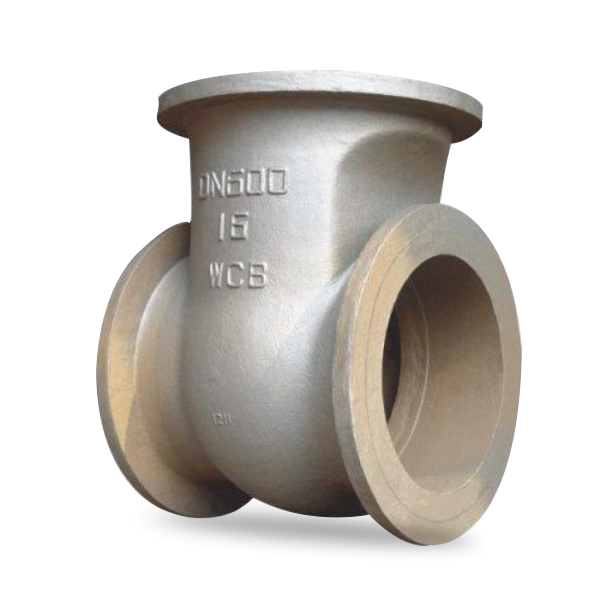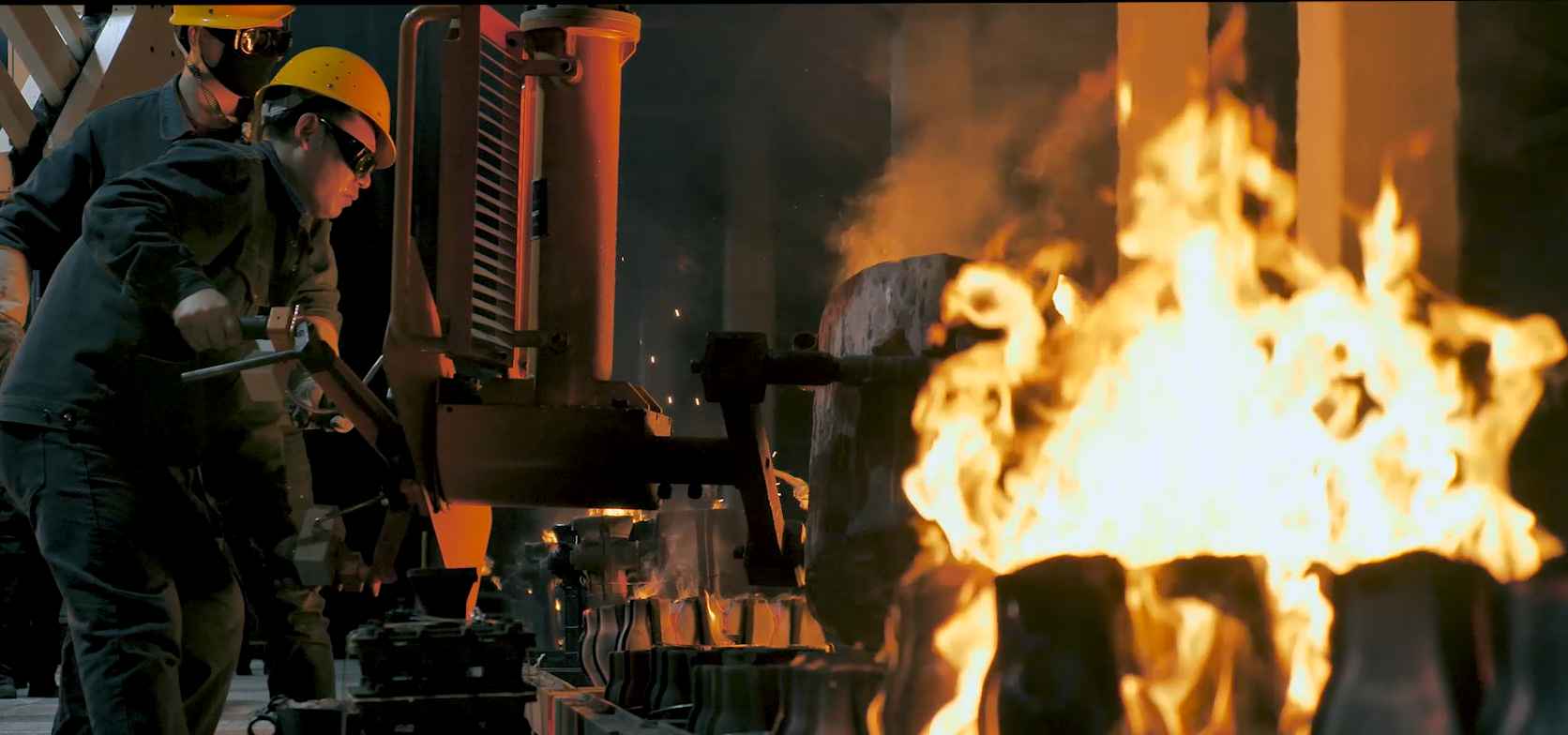أ صمام فراشة من نوع الرقاقة صمام الفراشة هو جهاز للتحكم في التدفق يستخدم بشكل شائع في العديد من الصناعات، بما في ذلك معالجة المياه والمعالجة الكيميائية وأنظمة التدفئة والتهوية وتكييف الهواء والنفط والغاز. يُعرف هذا الصمام بتصميمه المدمج وفعاليته من حيث التكلفة وبساطته، ويلعب دورًا حيويًا في تنظيم تدفق السوائل (السوائل أو الغازات) عبر الأنابيب. لفهم كيفية عمل صمام الفراشة من النوع الرقاقي، من الضروري النظر في مكوناته وآلية تشغيله ومزاياه.
مكونات صمام الفراشة من نوع الرقاقة
يتكون صمام الفراشة على شكل رقاقة من عدة مكونات رئيسية:
-
جسم الصمام: جسم الصمام هو الهيكل الرئيسي ويحمل جميع المكونات الداخلية. تم تصميم جسم الصمام من النوع الرقاقي ليتم إدخاله بين حافتين، مما يعني أنه لا يحتوي على وصلات خارجية للشفة. عادة ما يكون مصنوعًا من مواد متينة مثل الحديد الزهر أو الفولاذ المقاوم للصدأ أو البلاستيك لتحمل الضغط والتآكل.
-
قرص الفراشة (الدوار): هذا هو عنصر التحكم الأساسي في التدفق داخل الصمام. القرص هو عادةً لوحة دائرية تدور حول محور مركزي. عندما يكون الصمام مغلقًا بالكامل، يكون القرص عموديًا على تدفق السائل، مما يعيق المرور تمامًا. عندما يكون الصمام مفتوحًا، يدور القرص موازيًا للتدفق، مما يسمح للسائل بالمرور.
-
رمح: يربط العمود قرص الفراشة بالمحرك (يدوي أو آلي). ينقل العمود حركة المحرك إلى القرص للتحكم في دورانه.
-
المُحرك: يوفر المحرك القدرة الميكانيكية لتدوير القرص. ويمكن أن يكون يدويًا (باستخدام عجلة يدوية) أو آليًا (باستخدام محرك كهربائي أو هوائي أو هيدروليكي). يسمح المحرك للصمام بفتح وإغلاق أو تعديل التدفق، حسب التطبيق.
-
الأختام والحشيات: تضمن هذه المكونات أن يظل الصمام مقاومًا للتسرب، مما يمنع السائل من الهروب حول القرص والعمود. عادة ما تكون الأختام مصنوعة من مواد مثل المطاط أو الإيلاستومر أو PTFE (التيفلون)، اعتمادًا على طبيعة السائل وظروف الضغط/درجة الحرارة.
كيف يعمل؟
أ صمام فراشة من نوع الرقاقة تعمل هذه الآلية على أساس دوران قرص الفراشة. وفيما يلي شرح لكيفية عمل الآلية خطوة بخطوة:
-
وضع الصمام مغلق:
- عندما يتم إغلاق الصمام، يتم وضع قرص الفراشة بشكل عمودي على تدفق السائل. في هذا الوضع، يعيق القرص خط الأنابيب، مما يمنع السائل من المرور عبر الصمام.
- لا يدور العمود المتصل بالقرص عند إغلاق الصمام.
-
فتح الصمام:
- لفتح الصمام، يقوم المحرك (يدوي أو آلي) بتدوير العمود، والذي يقوم بدوره بتدوير قرص الفراشة. ومع دوران القرص، فإنه يتحرك من وضع عمودي إلى وضع موازٍ فيما يتعلق باتجاه التدفق.
- عندما يدور القرص إلى وضع مفتوح، تزداد مساحة التدفق، مما يسمح للسائل بالمرور عبر الصمام. وكلما دار القرص أكثر، كلما أصبحت فتحة التدفق أكبر.
-
التحكم في التدفق والتعديل:
- يمكن تعديل الصمام ليفتح جزئيًا أو يغلق جزئيًا، مما يوفر تحكمًا دقيقًا في معدل التدفق. وهذا مفيد بشكل خاص في التطبيقات التي يكون فيها تعديل تدفق السوائل ضروريًا.
- يحدد موضع قرص الفراشة، الذي يتم التحكم فيه بواسطة المحرك، حجم السائل المسموح له بالمرور عبر الصمام، مما يجعله أداة فعالة لتنظيم التدفق.
-
الصمام مغلق مرة أخرى:
- لإغلاق الصمام، يقوم المحرك بعكس دوران العمود، ويتحرك القرص مرة أخرى إلى موضعه العمودي، مما يؤدي إلى منع التدفق تمامًا.
مزايا صمامات الفراشة من نوع الرقاقة
توفر صمامات الفراشة من نوع الرقاقة العديد من الفوائد الرئيسية، مما يجعلها خيارًا شائعًا في العديد من التطبيقات:
-
تصميم مضغوط:
- إن هيكل الرقاقة نحيف ومضغوط، ويتطلب مساحة أقل من الأنواع الأخرى من الصمامات مثل صمامات الكرة أو صمامات البوابة. وهذا التصميم يجعلها مثالية للتركيبات حيث تكون المساحة محدودة.
-
خفيف الوزن:
- بالمقارنة مع الصمامات الأخرى ذات الأحجام المماثلة، فإن صمامات الفراشة من نوع الرقاقة تكون أخف وزناً بشكل عام، مما يسهل التركيب ويقلل من تكاليف النقل.
-
صيانة منخفضة:
- إن تصميم صمام الفراشة بسيط ويحتوي على أجزاء متحركة أقل مقارنة بأنواع الصمامات الأخرى. وهذا يعني أن التآكل والتلف أقل، مما يعني متطلبات صيانة أقل بمرور الوقت.
-
تشغيل سريع وسهل:
- يمكن فتح صمامات الفراشة وإغلاقها بسرعة. وهذا مفيد بشكل خاص في التطبيقات التي تتطلب التحكم السريع في التدفق. يمكن تشغيل الصمام يدويًا أو هوائيًا أو هيدروليكيًا أو كهربائيًا، مما يوفر مرونة في التشغيل.
-
فعالة من حيث التكلفة:
- تعتبر صمامات الفراشة من نوع الرقاقة أقل تكلفة في التصنيع والتركيب مقارنة بأنواع الصمامات الأخرى، مما يجعلها خيارًا اقتصاديًا للعديد من التطبيقات.
-
التنوع:
- يمكن استخدام هذه الصمامات في مجموعة واسعة من السوائل، من الماء إلى الغازات إلى المواد الكيميائية الملاطية، وهي متوفرة في مواد مختلفة لتلبية الاحتياجات المحددة للصناعات المختلفة.
التطبيقات الشائعة
تُستخدم صمامات الفراشة من نوع الرقاقة على نطاق واسع في مختلف الصناعات لأغراض مختلفة:
- معالجة المياه والصرف الصحي: تنظيم تدفق المياه في محطات المعالجة والتحكم في شبكات الصرف.
- أنظمة التدفئة والتهوية وتكييف الهواء: التحكم في تدفق الهواء في أنظمة التدفئة والتهوية وتكييف الهواء.
- الصناعات الكيميائية والبتروكيماوية: يستخدم للتحكم في تدفق المواد الكيميائية والغازات والمواد الملساء في خطوط الأنابيب.
- النفط والغاز: لإدارة تدفق النفط والغاز والسوائل الأخرى في خطوط الأنابيب ومعدات المعالجة.
صمامات الفراشة من نوع الرقاقة تُعد الصمامات من المكونات الأساسية في العديد من أنظمة معالجة السوائل. إن تصميمها البسيط والفعال وسهولة تشغيلها وفعاليتها من حيث التكلفة تجعلها مناسبة لمجموعة واسعة من التطبيقات الصناعية. من خلال استخدام قرص الفراشة الدوار لتنظيم التدفق، توفر هذه الصمامات أداءً موثوقًا به لكل من التشغيل/الإيقاف والتحكم في التعديل. إن فهم كيفية عملها ومزاياها يمكن أن يساعد المهندسين والمشغلين في اختيار أفضل صمام لاحتياجاتهم المحددة، مما يضمن إدارة السوائل بكفاءة وفعالية من حيث التكلفة في أنظمتهم.









